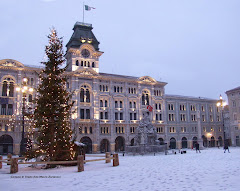 The 20th of January some classes of our school went to the Verdi Theatre to see the Aida, a famous opera by Giuseppe Verdi, commissioned for the opening of the Suez Canal but retarded because of the French-Prussian war. It was finally performed at Cairo Khedivial Opera House the 24th of December 1871. In the opera
The 20th of January some classes of our school went to the Verdi Theatre to see the Aida, a famous opera by Giuseppe Verdi, commissioned for the opening of the Suez Canal but retarded because of the French-Prussian war. It was finally performed at Cairo Khedivial Opera House the 24th of December 1871. In the opera  Aida, an Ethiopian princess is captured and brought into slavery in Egypt. A military commander, Radames, struggles to choose between his love for her and his loyalty to the Pharaoh. To complicate the story further, Radames is loved by the Pharaoh's daughter Amneris.
Aida, an Ethiopian princess is captured and brought into slavery in Egypt. A military commander, Radames, struggles to choose between his love for her and his loyalty to the Pharaoh. To complicate the story further, Radames is loved by the Pharaoh's daughter Amneris.It was an interesting experience for all of us. The atmosphere tooked us back in time somehow and made us feel like the people of the 19th century, because we went through the same doors to see the same opera.
 Something about the theatre.
Something about the theatre.The “Verdi Opera House”, named after the composer Giuseppe Verdi, was privately commissioned by Giovanni Matteo Tommasini in the 18th century to Gian Antonio Selva, the architect of the “La Fenice” Theatre in Venice. He designed the interiors - a classic horseshoe-shaped auditorium, but Matteo Pertsch was engaged for the exteriors where he incorporated elements of the Theatre “La Scala” in Milan. So the Verdi Opera House became a mixture between the styles of the “La Fenice” and “La Scala”. The theatre opened his doors on April 21st 1801 and it could host 1400 people.
Marko (4B)


.jpg)


Nessun commento:
Posta un commento